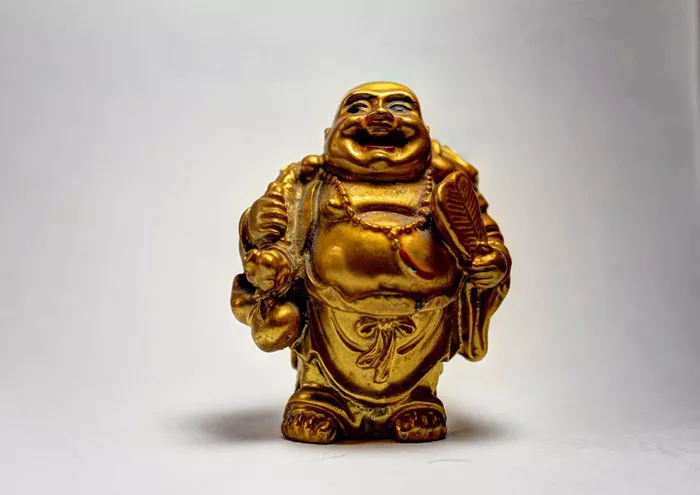Many people love to have Buddha statues in their homes or temples. But not all statues are made equal. Some are crafted with deep spiritual meaning and respect, while others are just ordinary decorations. If you want to have a true Buddha statue, it is important to know how to recognize an authentic one.
This article shares 10 expert tips to help you identify an authentic Buddha statue. We also explain the buddha statue meaning and the value behind these sacred artworks. Understanding these points will help you appreciate the statue more and bring positive energy to your life.
10 Expert Tips to Identify an Authentic Buddha Statue
Tip 1: Understand the Types of Buddha Statues
Before buying a Buddha statue, learn about the different types of buddha statues. Each type shows the Buddha in a different pose and gesture (mudra). These poses represent various teachings or moments in the Buddha’s life.
Common Buddha Poses
- Meditation Pose: Buddha seated with hands in the lap, symbolizing calm and inner peace.
- Teaching Pose: Buddha with one hand raised, representing the teaching of Dharma.
- Protection Pose: Buddha with the right hand stretched out, showing protection from fear.
Knowing these helps you understand if the statue is crafted with knowledge or just random shapes.
Tip 2: Check the Material of the Statue
Authentic Buddha statues are usually made from quality materials like bronze, brass, stone, or wood. Cheap plastics or low-quality metals often indicate mass production without spiritual value.
Traditional materials not only last longer but also respect the sacredness of the Buddha image. When touching the statue, it should feel solid and well-made.
Tip 3: Look for Fine Details and Craftsmanship
A true Buddha statue will have clear and delicate details. Notice the face — it should be calm and peaceful, showing compassion and wisdom. The eyes are often half-closed, representing a meditative state.
Hands and feet should be well-shaped, and the folds of the robe carefully carved or cast. If the statue looks rough or careless, it may not be authentic.
Tip 4: Study the Facial Expression
The face of a Buddha statue carries deep meaning. A real statue shows serenity, kindness, and balance. The smile is gentle, not exaggerated or fake.
The nose is usually straight and proportional, while the ears are long, symbolizing Buddha’s wisdom and ability to hear suffering.
Tip 5: Identify the Mudras (Hand Gestures)
Mudras are special hand positions of the Buddha. Each mudra has a specific meaning, like teaching, meditation, or blessing. An authentic Buddha statue respects these mudras accurately.
If the hand gestures look strange or do not follow traditional patterns, the statue might not be made with correct Buddhist understanding.
Tip 6: Recognize the Usnisha and Urna
The usnisha is the rounded bump on top of Buddha’s head. It symbolizes his spiritual wisdom. The urna is a small dot or curl of hair between the eyebrows, representing his divine vision.
Authentic statues always include these features. Their absence is a sign the statue might be decorative only.
Tip 7: Observe the Statue’s Proportions
The Buddha’s body in statues usually follows certain artistic rules. The height of the head, the size of the hands, and the length of the fingers have balanced proportions that create harmony.
Disproportionate or awkward shapes suggest the statue is not made by a skilled craftsman or lacks traditional knowledge.
Tip 8: Verify the Origin and History
Where the statue was made and who made it can tell you a lot. Authentic Buddha statues often come from countries with long Buddhist traditions, such as Thailand, Nepal, Tibet, or India.
Ask the seller for details about the statue’s origin. A genuine piece usually has some background story or certificate of authenticity.
Tip 9: Feel the Energy and Spiritual Presence
Buddha statues are more than art; they carry spiritual energy. When you look at or touch an authentic statue, you may feel calm, peace, or inspiration.
This feeling cannot be faked. It comes from the sacred intention behind the creation of the statue.
Tip 10: Avoid Mass-Produced Statues with No Spiritual Value
Many Buddha statues today are mass-made souvenirs or decorations. These often miss important details or symbolic meanings.
Try to choose statues that are handcrafted with care and respect for Buddhist teachings. This ensures the statue is more than just a decoration — it is a spiritual symbol.
Conclusion
Recognizing an authentic Buddha statue takes attention and knowledge. By following these 10 expert tips, you can select a statue that truly honors the Buddha’s teachings and brings peace to your space.
Remember, understanding the buddha statues types and meanings will deepen your respect and connection to the statue.
Choose wisely, and your Buddha statue will be a source of inspiration for years to come.

